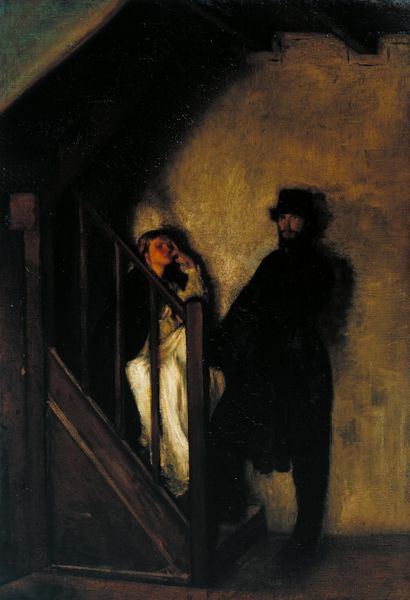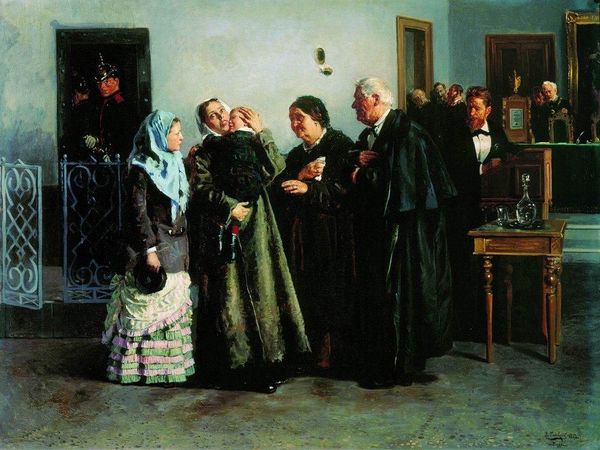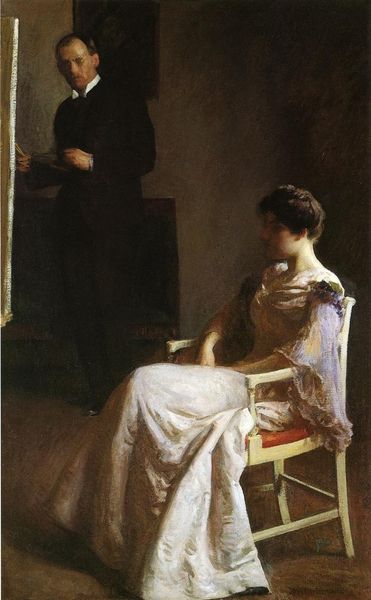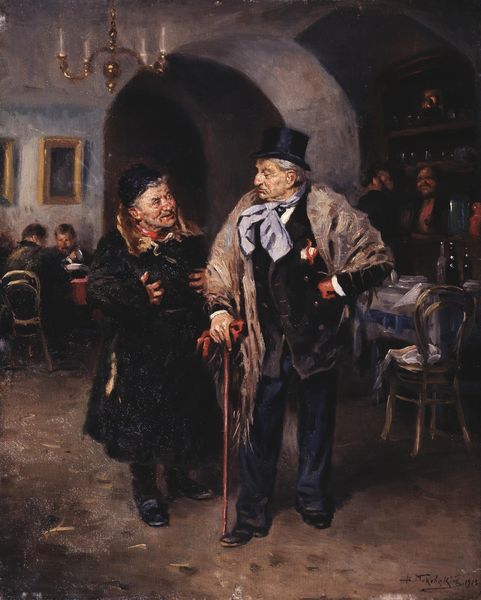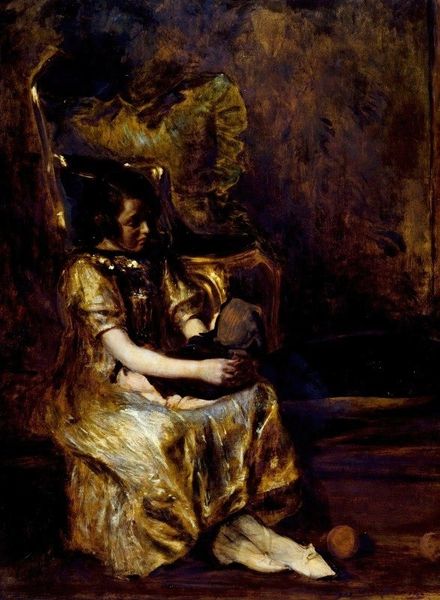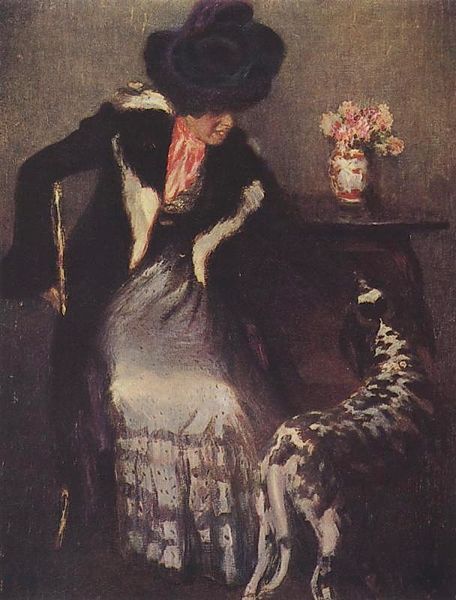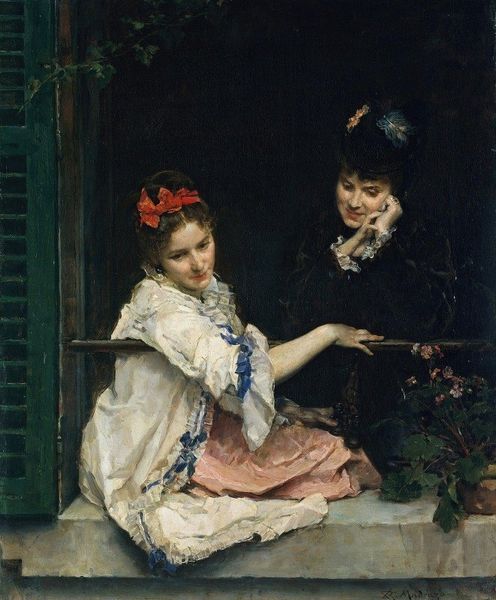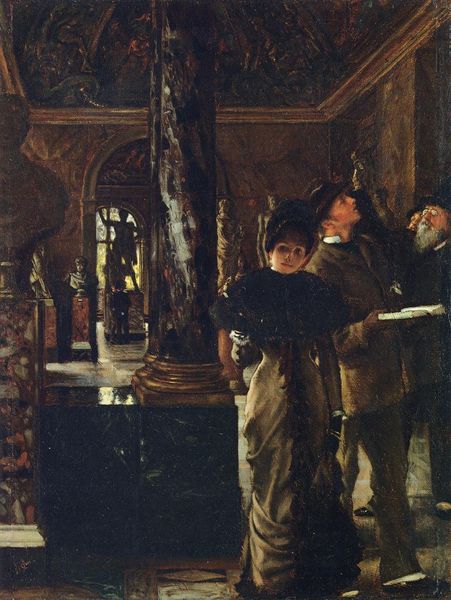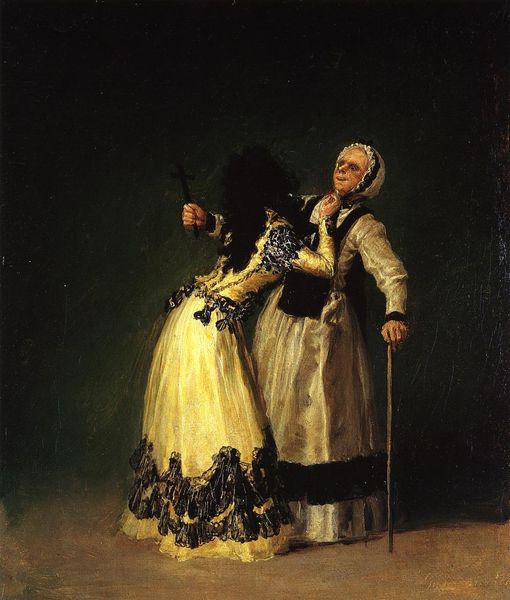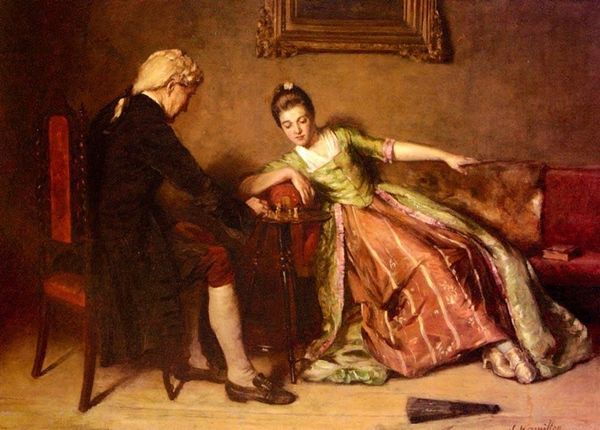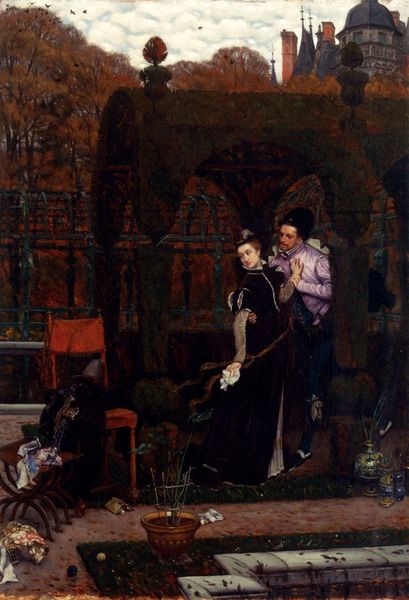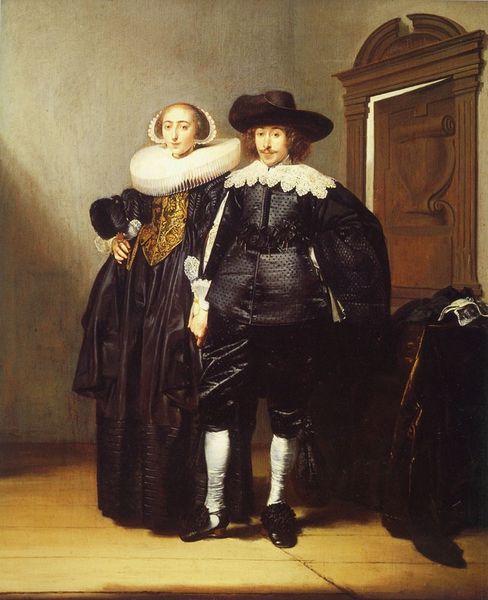
Dimensions: 40 x 31 cm
Copyright: Public domain
Curator: Vladimir Makovsky gives us this slice of Russian life in his 1884 painting, “In the Hall," currently residing at the Tretyakov Gallery. The medium is oil on canvas, lending a soft glow to the otherwise somber scene. What catches your eye initially? Editor: Well, immediately, a certain gloom pervades, doesn’t it? It's in the hushed palette and the figures themselves—the gentleman with his severe attire and the woman with her downturned eyes—it all feels heavy with unspoken anxieties. Curator: It's interesting that you pick up on that. The image resonates because it subtly critiques social stratification. The uniformed attendant almost dutifully holds the luxurious fur coat for this wealthy man. There’s deference, yet a quiet, perhaps even unwitting resistance from the woman’s melancholic demeanor. Editor: Ah, a socio-political tableau cleverly masked as a commonplace scene! But is the woman necessarily "resisting"? I wonder if her expression suggests more weariness or perhaps just an awareness of the rigid societal constraints around her. She seems hemmed in, doesn’t she? The dark palette and the confines of the hall itself almost echo that. Curator: Absolutely. And consider the door lurking there in the background - framing the darkness as a sort of portal or, conversely, a solid, immovable barrier. We know Makovsky often embedded his artworks with understated social commentary; that was part of his realism. It wasn't just about portraying the everyday, but quietly asking questions. Editor: Yes, the staging of that moment, of the simple offering of the coat. It encapsulates the nuances of power at play. The averted gaze is what makes it – it is like a small rebellion of sorts. It speaks of human dignity, refusing to be flattened beneath societal weight. It's that intimate, quiet gesture which holds its ground more forcefully than overt protest ever could. Curator: Exactly! The piece invites introspection beyond its aesthetic appeal. It reminds us how art acts as a witness to—and sometimes, an agent of change within—society’s structures and hidden emotions. It’s so much more than meets the eye. Editor: True. And those subdued browns and greens! They linger like an unresolved melody. It prompts me to look around for those similar moments happening around us everyday and think about how we could alter our outlook and attitude in society.
Comments
No comments
Be the first to comment and join the conversation on the ultimate creative platform.
